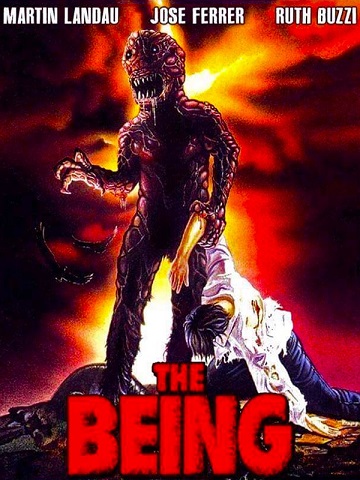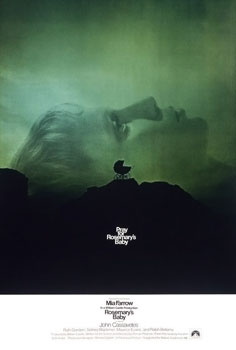The 1983 film, The Being, takes place in the town of Pottsville, Idaho.
Pottsville is a small town with a quaint downtown, a drive-in that shows violent slasher films, and a group of neighborhood activists who have come together to take a stand against smut. (Maybe they should start with that drive-in….) It’s home to a quarry, several potato farms, a trailer park, a diner, a church, and a …. ahem …. nuclear waste dump.
Strange things are happening in town. The young son of Marge Smith (Dorothy Malone) has vanished and Dorothy has become a familiar sight, wandering around the town in the middle of the night and searching for her child. One person loses his head while fleeing an unseen assailant. Two rednecks are killed while smoking weed at the drive-in theater. People are dying and Detective Mortimer Lutz (Bill Osco) is determined to find out who (or what) is doing the killing. He’s particularly concerned about the fact that a mysterious green slime is found at all of the crime scenes.
Meanwhile, Mayor Gordon Lane (Jose Ferrer) is more concerned with just covering up the crimes and the history of nuclear waste disposal because he’s got potatoes to harvest and he also hopes to be the first potato farmer in the White House. (George Washington already beat him to that, though one could point out that Washington never actually lived in the current White House.) While his wife (Ruth Buzzi) encourages everyone in town to take a stand against smut, Mayor Lane calls in a chemical safety engineer named Garcon Jones (Martin Landau) to investigate.
The Being is a bit of an oddity. On the one hand, the title character is grotesque and the scenes in which the creature attacks its victims are notably gory. On the other hand, the film has a strangely off-center sense of humor, starting with Bill Osco’s opening narration, which Osco delivers in the teeth-clenched rat-a-tat style of Rod Serling. Halfway through the film, the action stops so that Lutz can have a rather bizarre dream in which he sees Garcon fall out of an airplane while the mayor’s wife flies by on a broomstick with blood flowing from her eyes. This is the type of film in which the notably bloody conclusion is followed by satiric title cards that tell us what happened to each of the survivors. The Being is a horror film that seems to be cheerfully aware of its budgetary limitations and, as a result, it’s full of moments in which it seems to wink at the audience and say, “Hey, don’t worry so much. Sit back and have fun.”
For a low-budget, often poorly lit film about a killer mutant, The Being has an impressive cast. Dorothy Malone, Jose Ferrer, and Martin Landau were all Hollywood veterans and all three of them give admirably straight-faced performances in their smallish roles. (Ferrer and Malone won Oscars long before appearing in The Being. Landau won his Oscar a decade after.) Ferrer, in particular, does a good job of portraying the mayor’s irritation at having to actually deal with the people that he governs. I also liked the performance of Ruth Buzzi. Buzzi plays someone who should be very familiar to anyone who has ever lived in a small town, the person who has found a small amount of power and who is determined to never give up.
Low-budget aside, The Being is just odd enough to be watchable.

